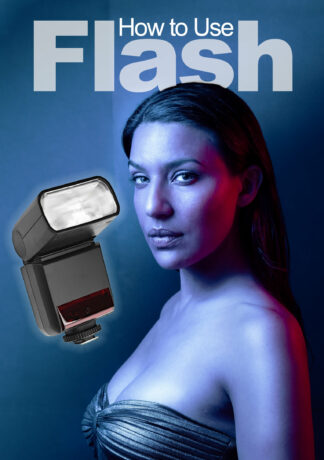Today, popular cameras fall into four main categories: smartphones, fixed-lens cameras (also known as point & shoots), mirrorless interchangeable lens cameras, and Digital SLRs (DSLRs). Each has its own advantages, as the following sections discuss.
Smartphones
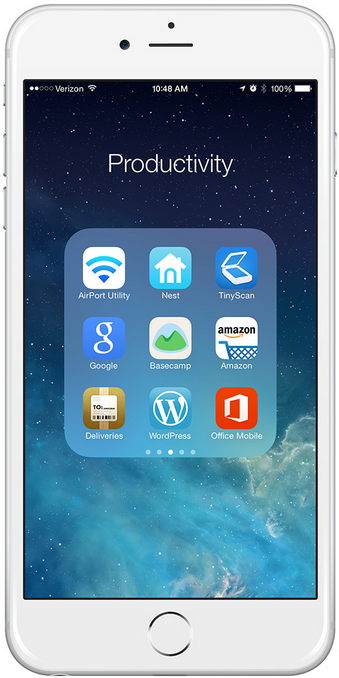 An interest in taking photos can start with a camera phone. You simply can’t beat the convenience of a camera that can send a picture to your friends in 10 seconds. As photographer Alexander Hollander demonstrates, it’s possible to make amazing pictures with a camera phone. To see Hollander’s pictures, check out the Mobile folder in his Flickr photostream at http://www.flickr.com/photos/alexanderhollander.
An interest in taking photos can start with a camera phone. You simply can’t beat the convenience of a camera that can send a picture to your friends in 10 seconds. As photographer Alexander Hollander demonstrates, it’s possible to make amazing pictures with a camera phone. To see Hollander’s pictures, check out the Mobile folder in his Flickr photostream at http://www.flickr.com/photos/alexanderhollander.
- Convenience. I carry my phone with me everywhere, so I always have it. As commercial photographer Chase Jarvis is credited with saying, “The best camera is the one that’s with you.”
- Detail. Modern camera phones take pictures with more than enough detail for Facebook or even moderately large prints. For example, the iPhone 5S’ 8 megapixel camera can make 11×17” prints at more than 200 dots per inch (dpi), providing enough detail that the average person wouldn’t be able to distinguish the print from that made with a professional DSLR.
- Software. Because modern smartphones have a great deal of processing power, the camera apps are often feature-rich, supporting High Dynamic Range (HDR, as discussed in Chapter 11 of Stunning Digital Photography), panoramas (as discussed in Chapter 2), and powerful image editing capabilities such as those provided by Instagram and similar apps.
- Connectivity. Camera phones are constantly connected to the Internet, allowing you to take a picture, edit it (optionally), and then message it to someone directly or post it on Facebook or Twitter. Recency is one of the most important factors in photography—a picture of your son hitting a home run last week will be interesting to his grandparents, but a picture of him hitting a home run 20 seconds ago can make them feel like they’re standing next to you. It also allows you to get immediate feedback from friends anywhere in the world.
While camera phones provide great detail, they fail in many other ways:
- No zoom. All popular camera phones have a non-interchangeable, wide-angle fixed focal length lens. In other words, you can’t zoom, and zooming is the single most important feature in any lens. Digital zooms aren’t useful because they make everything blurry; you’re better off just cropping the picture after you take it. You can buy lenses that attach on the outside of some camera phones, but they’re inconvenient and the picture quality isn’t great.
- Awful flash. Camera phones feature a bright LED located very close to the lens. Typically, you have no control over the flash except to turn it on or off. The flash produces red-eye (which might be fixed automatically in software), blows out nearby subjects, and leaves anything farther than a few feet away in darkness. Once you use a bounce flash (discussed in Chapter 3), you’ll never be able to tolerate your camera phone’s flash.
- Slow speed. DSLRs take pictures within milliseconds of you pressing the shutter. With a camera phone, you often have to wait a full second or more before the camera app takes a picture. That’s fine for a landscape shot, but if you’re trying to take a picture of your son blowing out his birthday cake candles, you’re likely to get a photo of nothing but smoke.
- Limited or difficult controls. Many smartphones over almost no control over the camera’s settings. Some apps allow you to control the exposure, aperture, ISO, and shutter speed. However, changing the settings is a slow process of tapping on the touch screen. DSLRs typically have physical dials that you can spin to immediately get the settings you want.
- No background blur. You’ll never get a nicely blurred background from a camera phone picture unless you download an app that blurs it after you take it.
Because of these drawbacks, camera phones are still frustrating to use for all but the most casual snapshots. No matter which serious camera you buy, though, your smartphone will always get used because of its convenience.
Fixed-Lens Cameras
 Fixed-lens cameras come in every size, shape, quality, and cost, and the only trait that brings them together is their lack of an interchangeable lens. Most casual photographers only ever use their kit lens. If you want a high-quality camera for general use, and you don’t plan to shoot serious sports, wildlife, weddings, portraits, or astrophotography, a fixed lens camera is the right choice for you. Basically, I recommend a fixed-lens camera to everyone who wants to take great pictures but doesn’t want photography to become a hobby or profession. The smallest fixed-lens cameras (P&S), fit in your pocket and require very little understanding of photography to take in-focus and well-exposed pictures. P&S cameras were the most popular camera type from about 1980 until about 2010. Before 1980, the technology simply didn’t exist to make cameras that were easy enough to use to be considered point-and-shoot. P&S cameras are a dying breed, however. While having a zoom lens is a big advantage over camera phones, the cost of buying a separate camera and the inconvenience of carrying it around just isn’t worth it for most people. As a result, I recommend people use their camera phones for snapshots and a mirrorless camera or DSLR for more serious photos, and completely avoid P&S cameras. There are also a growing number of fixed-lens cameras that bridge the gap between P&S cameras and DSLRs by offering bigger sensors, powerful lenses, manual controls, and external flash support. Their picture quality can be similar to DSLRs, giving you all the capabilities in a smaller, (sometimes) less-expensive package. Here are some quick recommendations:
Fixed-lens cameras come in every size, shape, quality, and cost, and the only trait that brings them together is their lack of an interchangeable lens. Most casual photographers only ever use their kit lens. If you want a high-quality camera for general use, and you don’t plan to shoot serious sports, wildlife, weddings, portraits, or astrophotography, a fixed lens camera is the right choice for you. Basically, I recommend a fixed-lens camera to everyone who wants to take great pictures but doesn’t want photography to become a hobby or profession. The smallest fixed-lens cameras (P&S), fit in your pocket and require very little understanding of photography to take in-focus and well-exposed pictures. P&S cameras were the most popular camera type from about 1980 until about 2010. Before 1980, the technology simply didn’t exist to make cameras that were easy enough to use to be considered point-and-shoot. P&S cameras are a dying breed, however. While having a zoom lens is a big advantage over camera phones, the cost of buying a separate camera and the inconvenience of carrying it around just isn’t worth it for most people. As a result, I recommend people use their camera phones for snapshots and a mirrorless camera or DSLR for more serious photos, and completely avoid P&S cameras. There are also a growing number of fixed-lens cameras that bridge the gap between P&S cameras and DSLRs by offering bigger sensors, powerful lenses, manual controls, and external flash support. Their picture quality can be similar to DSLRs, giving you all the capabilities in a smaller, (sometimes) less-expensive package. Here are some quick recommendations:
- Casual. The Canon Powershot S120 ($450) is an excellent all-around camera and a big step up from a smartphone. With built-in Wi-Fi and a touchscreen, you can still get pictures to your smartphone (and thus to Twitter or Facebook) to share with your friends without going back to a computer.
- DSLR companion. If you want a camera with manual controls that you can carry with you when you don’t want to bring your DSLR, consider the Canon G16. The lens is equivalent to a 28-140mm f/8 to f/13, so it’s not great in low light, and you won’t be able to blur the background in portraits. But, at least you won’t be lost without exposure compensation.
- Sports and wildlife. Many fixed-lens cameras brag about “40X” f/2.8 lenses, but they’re being deceptive. You can find photographers who’ve taken great sports and wildlife photos with a fixed-lens camera, but it’s much more difficult than it would be with a DSLR. If you plan to shoot sports and wildlife, your money is simply better spent on a DSLR.
- Video. The Panasonic FZ1000 ($1,000) is the cheapest way to get into high-quality 4k video. Panasonic is misleading when they advertise the lens as “25-400mm f/2.8-f/4.0”, however. The lens is physically 9.1-146mm f/2.8-f/4.0, and in full-frame 35mm terms, it behaves like a 25-400 f/8-f/11 lens. That’s lousy for a still camera, but fairly useful for a video camera.
- Serious, planned photography ($1,300). The Fujifilm X100S and newer X100T ($1,300 new, or $850 used) have an APS-C sensor and a prime 23mm f/2 lens that’s equivalent to a 35mm f/3 lens. They feel like an old-fashioned viewfinder camera in your hands. They lack a zoom, or the ability to change lenses, making them very specialized. The X100T offers a better viewfinder, a full control dial, a silent shutter, and a handful of other useful features. You might find a great price on a used X100S, however.
- Serious, planned photography ($2,800). The Sony RX-1 ($2,800 new, or $1,800 used) has a full-frame sensor and a prime 35mm f/2.0 lens with amazing image quality and low-light capabilities unmatched at this size. Like the X100S, the prime lens limits your options, but when the conditions are right, this camera takes sellable, professional-grade images.
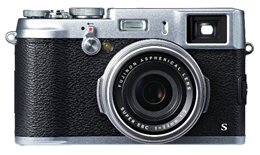
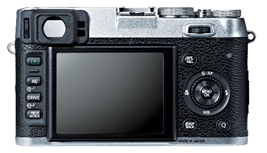 As discussed elsewhere, f/stop numbers are meaningless unless you factor in the camera’s sensor size. Most people don’t know this, however, and many fixed-lens camera manufacturers take advantage of this ignorance to mislead customers into believing a lens performs better than it actually does. For example, consider the Sony RX-10, which advertises a 24-200mm f/2.8 lens. Many photographers mistakenly believe that it will perform like a DSLR with a 24-70 f/2.8 and a 70-200 f/2.8 lens attached. However, if you calculate the crop factor (about 2.7X), you discover that the lens gathers the same amount of total light and provides the same background blur as a 24-200 f/7.6 full-frame 35mm lens. That’s substantially worse than a full-frame f/2.8 lens. For more information, refer to the Sensor Size and Crop Factor section.
As discussed elsewhere, f/stop numbers are meaningless unless you factor in the camera’s sensor size. Most people don’t know this, however, and many fixed-lens camera manufacturers take advantage of this ignorance to mislead customers into believing a lens performs better than it actually does. For example, consider the Sony RX-10, which advertises a 24-200mm f/2.8 lens. Many photographers mistakenly believe that it will perform like a DSLR with a 24-70 f/2.8 and a 70-200 f/2.8 lens attached. However, if you calculate the crop factor (about 2.7X), you discover that the lens gathers the same amount of total light and provides the same background blur as a 24-200 f/7.6 full-frame 35mm lens. That’s substantially worse than a full-frame f/2.8 lens. For more information, refer to the Sensor Size and Crop Factor section.
Mirrorless Interchangeable Lens Cameras
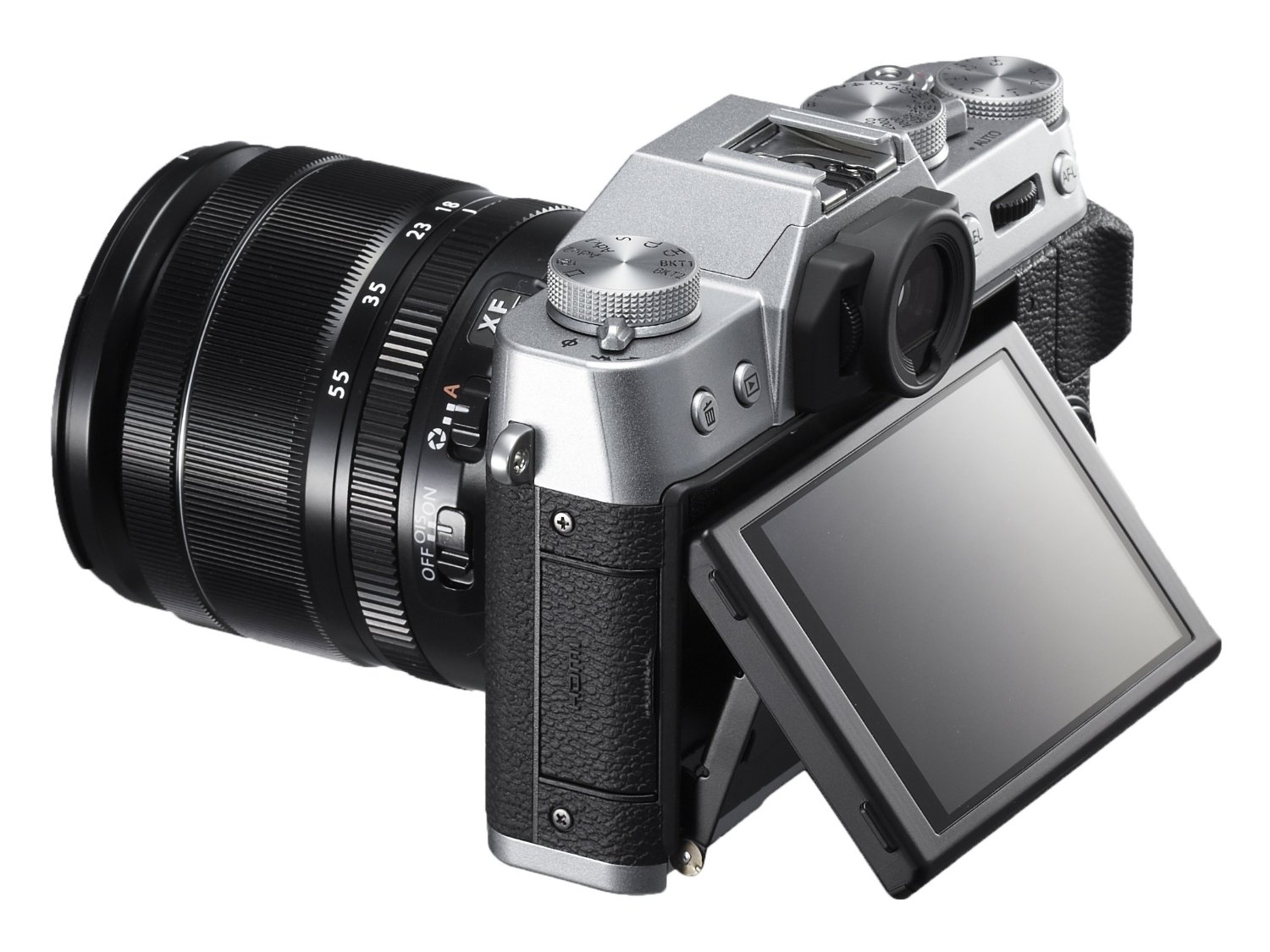 Mirrorless cameras (formally known as Mirrorless Interchangeable Lens Cameras, or MILCs) are the right choice for most non-professional photographers who don’t need access to the wide variety of Canon and Nikon DSLR accessories. Mirrorless cameras combine some of the best qualities of P&S cameras and DSLRs:
Mirrorless cameras (formally known as Mirrorless Interchangeable Lens Cameras, or MILCs) are the right choice for most non-professional photographers who don’t need access to the wide variety of Canon and Nikon DSLR accessories. Mirrorless cameras combine some of the best qualities of P&S cameras and DSLRs:
- Interchangeable lenses. Whereas P&S cameras have a lens built-in, mirrorless cameras support interchangeable lenses. This makes them substantially larger than a typical P&S camera when the lens is attached; however, being able to change lenses makes the cameras infinitely far more versatile than a P&S camera.
- Small size and light weight. Besides being more portable, small cameras are less intimidating. That makes them better for candid and street photography, where the photographer doesn’t want to be noticed.
- Manual controls and advanced features. Mirrorless cameras typically allow for manual control of shutter speed, aperture, ISO, and exposure compensation. Additionally, through the power of software, they provide advanced features such as bracketing, panoramas, and HDR.
- Raw file formats. Saving raw files instead of JPG files gives you much more flexibility for recovering overexposed highlights and fixing other photographic problems. Almost every photographer who does post-processing chooses raw files instead of JPG, so it’s no surprise that mirrorless cameras support raw file formats, just like DSLRs.
Mirrorless camera technology is advancing far faster than DSLRs. If you used a mirrorless camera in 2012, you might have been annoyed by the limited lens selection, slow performance, poor viewfinder, and noisy images. In 2014, mirrorless cameras match DSLRs in many different aspects of photography, including image quality. By 2020, I’m confident that even professionals will be buying more mirrorless cameras than DSLRs. If you’re a DSLR user and you have your doubts about mirrorless cameras, spend a full day shooting with a Panasonic GH4, Fujifilm X-T1, or Olympus E-M1. The next time you pick up a DSLR, it will seem clunky and impossibly heavy. The optical viewfinder will seem outdated compared to the electronic viewfinders, which are bright even at night, show you your exposure before you take a picture, and provide histograms and focus peaking. But I don’t recommend mirrorless cameras to everyone. No mirrorless system can match the variety of Canon and Nikon DSLR lenses and flashes. Mirrorless lenses and flashes cost more than comparable DSLR lenses and flashes, too. Despite manufacturer’s claims, none of them can track moving subjects as fast as a comparably priced DSLR. There are no bad mirrorless cameras on the market now—you literally can’t go wrong. However, to make your shopping a little easier, here are some suggestions, depending on your priority (prices include lens):
- Cheapest. The Olympus PEN E-PL3 ($250 new, $150 used) isn’t the newest model, it’s a little slow, and it has only a 12 megapixel sensor. However, it’s small and light, it has a tilt screen, it accepts the massive variety of Micro Four-thirds lenses, and the image quality is more than enough for beautiful 8×10” prints.
- Smallest. The Sony a5100 ($700) has fantastic still and video image quality in a very small size. The selfie touchscreen, wireless capabilities, and small size make it a great family camera.
- DSLR companion. If you have a DSLR but want something smaller to bring with you, the Olympus E-M10 ($650) has plenty of buttons and dials for manual controls, and it looks great in silver. With in-body image stabilization (IBIS) you can attach any lens, including prime lenses and adapted SLR lenses, and handhold at slow shutter speeds. My favorite lenses are the original Panasonic 20mm f/1.7 (for general use) and the Panasonic 45mm f/1.8 (for casual portraits).
- Best handling. The Fujifilm X-T1http://amzn.to/17F6rKN ($1,700 with a lens) is expensive, but old-school photographers will love the real shutter speed, exposure compensation, and ISO dials with the number written right on them. For best results, use a Fujifilm prime lens with an aperture dial.
- Best video. You can’t beat the amazing Panasonic GH4 ($1,700) with 4k video. Combine it with the Panasonic 14-140 ($630) lens for amazing results in a tiny, discreet package.
- Most DSLR-like. If you like the feel and functionality of a DSLR, but you want something smaller and lighter, I again recommend the Panasonic GH4 ($1,700). The electronic viewfinder is better than a DSLR’s optical viewfinder for most subjects, it can take 12 frames per second, and the electronic shutter allows for completely silent operation.
- Best image quality. The Sony a7R ($2,100) uses a 36 megapixel full-frame sensor, the same size as professional DSLRs but at a much smaller size. The Sony 24-70 f/4 ($1,200) is the best walking-around lens for it. That kit is expensive at $3,300, but you’ll get image quality similar to the best DSLRs at a lower price and weight. I will still recommend the Nikon D810 ($3,300 body only) to most photographers over the a7R, however, because the D810 has native support for more than 100 lenses, while there are only 5 native lenses designed for the a7R.
Beyond those recommendations, I would steer you towards either the Sony lineup or micro four-thirds cameras because of the wider range of lenses and accessories available to you. If image quality is particularly important to you, or you like low-light photography, choose a mirrorless camera with an APS-C sensor. Notice that I haven’t mentioned the Canon and Nikon mirrorless camera systems. They’re good, and they take great pictures. However, the big players in the DSLR market arrived a bit late to the mirrorless market, and their products simply aren’t as refined. I’m confident that they’ll have caught up within a couple of years, and I’ll be updating this section to recommend their newer entries.
Digital Single Lens Reflex (DSLRs)
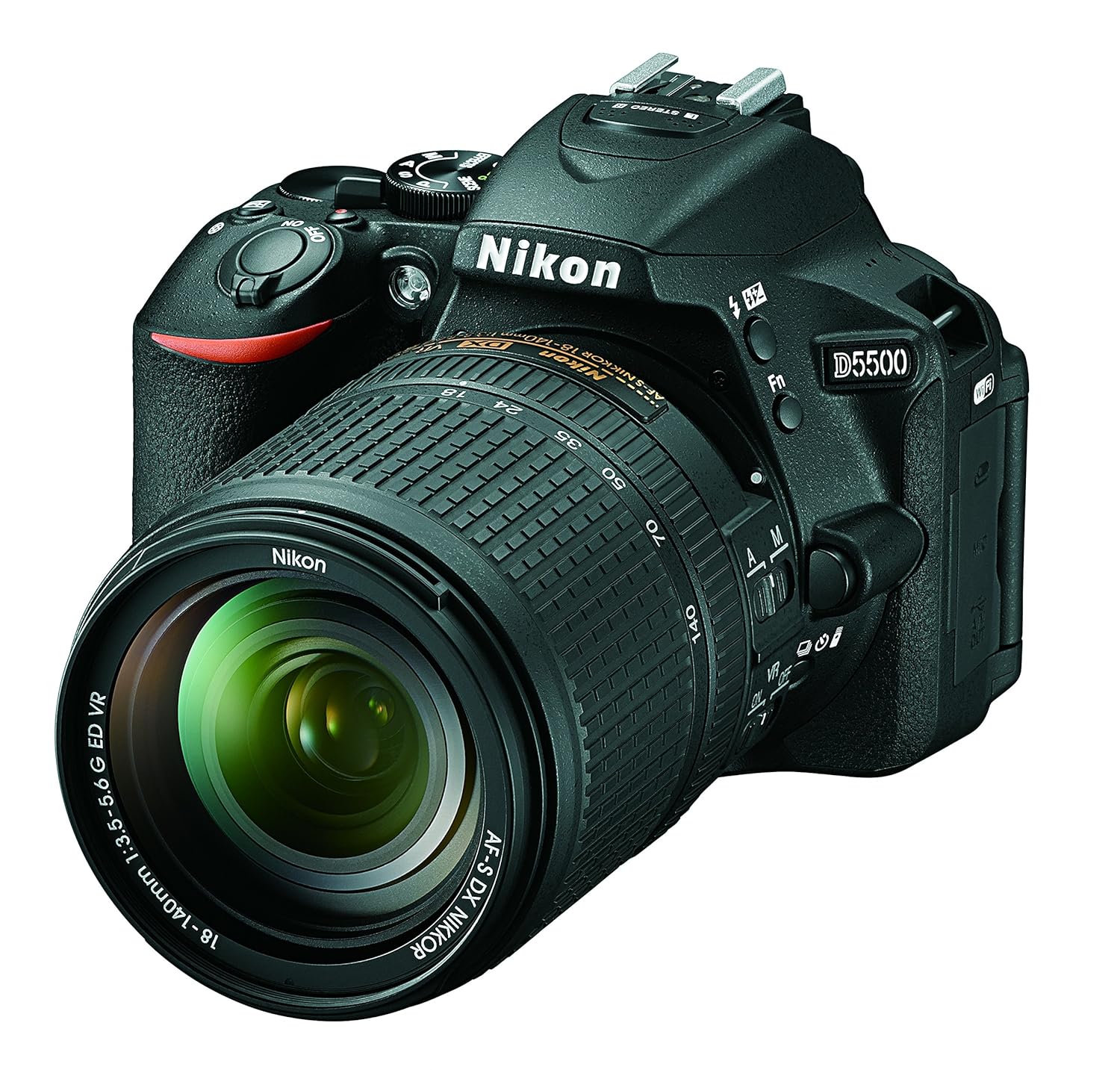 Digital Single Lens Reflex (DSLR) cameras are both the least and most expensive types of cameras. If you want to get the most camera for your budget, buy a used DSLR. If you are a professional photographer, or you want to shoot like one, a DSLR is the best choice for you. Like with mirrorless cameras, you can change the lenses and flashes on DSLRs. DSLRs have a few key advantages over mirrorless cameras:
Digital Single Lens Reflex (DSLR) cameras are both the least and most expensive types of cameras. If you want to get the most camera for your budget, buy a used DSLR. If you are a professional photographer, or you want to shoot like one, a DSLR is the best choice for you. Like with mirrorless cameras, you can change the lenses and flashes on DSLRs. DSLRs have a few key advantages over mirrorless cameras:
- Lens selection. Canon and Nikon DSLR systems are the oldest, and thus they have the widest selection of lenses. This doesn’t make any difference if your choice of camera system has all the lenses you need. However, serious portrait, wedding, sports, and wildlife photographers often need lenses only available to Canon and Nikon DSLR users. For example, there is no true mirrorless equivalent for the flexibility and shallow depth-of-field provided by the 70-200 f2.8.
- Lens cost. DSLR lenses tend to be less expensive than equivalent mirrorless lenses. For example, the Sony E-mount 50mm f1.8 is $300, while the Canon equivalent is $125 and the Nikon equivalent is $215. Kit lenses aside, mirrorless lenses tend to be 50%-300% more expensive than the DSLR equivalents. If you plan to buy a wide variety of lenses, a DSLR might simply be less expensive than a mirrorless camera.
- Focusing on moving subjects. DSLRs are defined by the mirror that bounces light from the lens to the viewfinder. This same mirror also reflects light to a dedicated phase-detect focusing system. While mirrorless cameras focusing systems have improved to the point that they focus just as well as DSLRs on still subjects, our tests show they are substantially less reliable for tracking moving subjects.
If you’re in the market for a DSLR, I have good news: it’s easier to buy your first DSLR than it is to buy your first P&S camera. There are no bad DSLRs on the market now—you literally can’t go wrong. However, to make your shopping a little easier, here are some suggestions for different budgets, depending on your priority (prices include lens):
- As inexpensive as possible. The Canon T3 kit or Nikon D3100 (both about $400 new or $300 used). These basic cameras do almost everything the more expensive cameras do, but they might require just a bit more patience. Remember, every dollar you save is a dollar more you can spend on lenses, flashes, and tripods.
- Up to $1000. The Canon 60D, Nikon D3300, or Nikon D5300. A solid step up from their basic counterparts, these models offer improved usability and image quality.
- Up to $1,500. The Canon 70D or Nikon D7100. The ultimate amateur sports and wildlife cameras, these bodies are the top-end compact cameras. The Canon 70D is also a capable video camera thanks to its video autofocusing capability.
- Up to $3,000. The Canon 6D or Nikon D610. These models provide full-frame sensors with image quality that leaps ahead of the less expensive models. Full-frame sensors are ideal for landscapes and portraits, but less useful for sports and wildlife.
- Up to $4,000. The Canon 5D Mark III or Nikon D810. These full-frame models offer the greatest possible image quality with dramatically improved autofocus systems.
Whenever possible, save yourself some money and buy refurbished or used equipment on eBay. Bodies, in particular, are often available used much cheaper than new, and they work just as well as their new counterparts. Newer bodies are rarely available used, requiring you to pay full price for them. Be sure to buy from a reputable buyer, and choose buyers that offer a return period whenever possible. I generally have no strong preference between Canon and Nikon. Each of the bodies at a similar price point creates similar pictures, and you shouldn’t worry too much about minor features. If you’re the type who wants to get started shooting as soon as possible, just buy the camera from the previous list that fits your budget, and start shooting. If you’re the type who wants to understand every aspect of a camera you’re buying, or if you’re considering upgrading your existing body and you don’t know if it’s worth it, continue reading this section. My goal is to inform you about the different factors that might influence your buying decision so that you can determine the factors that are most important to you and make an educated decision. If you just want to see an overview of the different camera bodies available, skip to the buying guides for Nikon (Chapter 13), Canon (Chapter 12), and Sony (Chapter 14).

